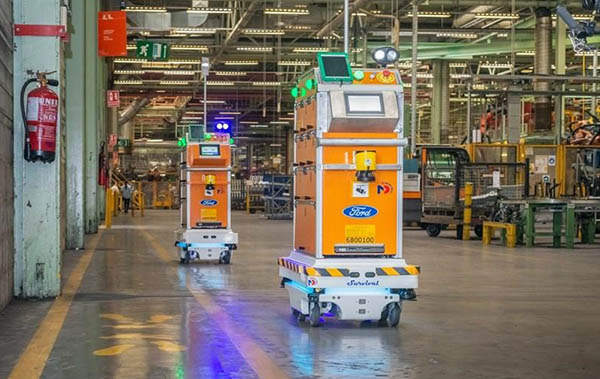Artificial intelligence, robotics, and related technologies have found a place in online retail. Ecommerce companies such as Amazon.com, Asos, and Zalando have found AI and deep learning essential. So why do they invest in machine learning (ML)? It can help them better understand their clients, customise offers for particular buyers, and automate manual tasks.
Machine learning allows online stores to be upgraded with smart on-site search, personalised product selection and ads, and intelligent chatbots. That’s why you should integrate it into your website, the Magento ”headless commerce” architecture a headless platform on another content management system (CMS), or even in a brick-and-mortar store.
Here are three ways to use machine learning and robotics to assist ecommerce.
Machine learning enables vision-guided picking
Systems and robotics such as Dematic offer sublime industrial applications. Regular robots that aren’t equipped with an advanced perception system require certain conditions. For example, the work environment must be fixed, and the robot should always proceed to a predetermined position.
How can a robot move to where it’s needed? Picking systems require high-precision sensing to locate objects to manipulate.
Today, vision-guided robots (VGR) are rising in popularity. They include the following capabilities:
- Recognising an object with cameras or other sensors
- Determining the item’s shape and position in space
- Picking and transferring the item to a target point with robotics hardware
A seemingly simple task requires complex AI and ML technologies. VGRs are commonly used to locate objects on a conveyor belt. How does this help e-commerce companies? Most vision-guided picking occurs in warehouses.
Advanced automation systems can help online stores keep up with product flow and ensure customer satisfaction.
AI manages mobile robot fleets
As manufacturers and supply chains adopt automation, they must control and manage their growing fleets of autonomous mobile robots (AMRs). Fleet management systems (FMS) from the robot vendors or third-party software providers can help.
An FMS allows users or operators to centrally supervise numerous mobile robots from multiple devices via standard communication protocols. They can use devices including laptops, tablets, or smartphones to access the robots from anywhere, not just the shop floor.
What benefits can an FMS provide? First, it helps avoid bottlenecks and downtime, ensuring 24/7 AMR operation throughout a facility.
For instance, FMS software offers an intuitive Web interface for programming and monitoring. How does it work?
- It assigns priorities to several robots and coordinates their actions.
- The software allocates the tasks among the mobile robots to complete the job in the least amount of time.
- It also guarantees that the mobile robots move to a charging station and charge up between tasks, reducing downtime.
- The smart system allows users to have multiple levels of access.
It is equipped with cameras to control robot traffic patterns. Coupled with advanced learning algorithms, the system analyses anonymised data to determine the objects in the area, such as people, forklifts, or other mobile equipment.
AMRs receive this information from the cameras, which improves their awareness of their surroundings and allows them to change their behaviour even before entering an area. Thus, the robots use AI and ML to avoid high-traffic areas, such as where goods are regularly transported and transferred by fork trucks or where large groups of workers are present.
FMS robots are already at work at Toyota, Ford, and other companies in over 60 countries.
Autonomous personalised product selection for ecommerce marketing
As autonomous as the cars of the future are becoming, your email marketing can now be left to run itself. This software solution is called hyper-personalisation software. When your business is gathering momentum, and you begin to appreciate the value of email marketing, you commonly fall into the pit of firstly affording staff, an expensive commodity (how much do your staff really cost), and secondly finding time – if even in a management capacity.
Hyper-personalisation solutions and there are many distinctions between the leading providers, enable exactly the right SKU to be offered to exactly the right individual at exactly the right time. Gone are the days of perpetual segmentation, replaced by a coherent system with AI-selected products offering the greatest degree of relevance to that individual consumer. No wonder the ROI on hyper-personalisation substantiates that it is proclaimed champion of all other marketing channels combined.
Once installed it’s great just to be able to enjoy its autonomy from any human intervention. No more mistakes, no more mistargeting and no more omissions. It builds your business and is perpetually running in the background without supervision, or any human interface whatsoever.





